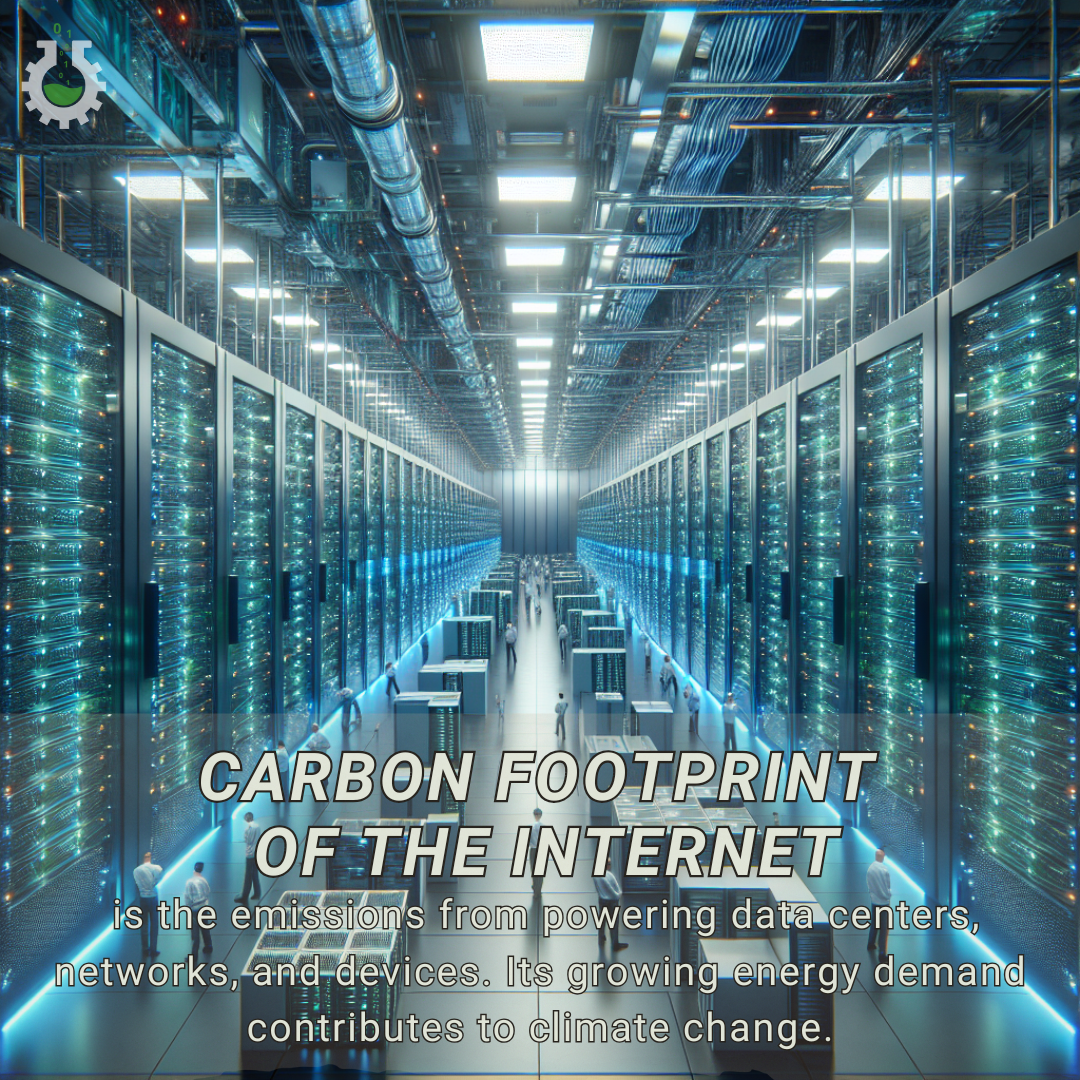October 22, 2024
Climate Change Poster Collection of the Week – Carbon Footprint of the Internet
Book a Demo
This week’s Climate Change Poster Collection highlights the Carbon Footprint of the Internet is an often overlooked yet significant environmental challenge in our digital age. As we immerse ourselves in the convenience of online connectivity, streaming videos, sending emails, and storing data in the cloud, we seldom consider the vast infrastructure that supports these activities. At the heart of this digital ecosystem are data centers—massive facilities housing thousands of servers that store, process, and transmit the colossal amounts of data we generate daily. These data centers are the powerhouses of the internet, but they come with a hefty energy demand. To keep the servers running efficiently and prevent overheating, data centers consume enormous amounts of electricity, much of which is still sourced from fossil fuels. This reliance on non-renewable energy sources contributes significantly to greenhouse gas emissions, making the internet’s carbon footprint comparable to that of some of the world’s largest industries.
As digital consumption continues to escalate, driven by the proliferation of smart devices, the expansion of high-speed internet access, and the increasing reliance on cloud-based services, the environmental impact of the internet is poised to grow exponentially. Video streaming alone, which accounts for a substantial portion of internet traffic, is a major contributor to this trend. With the advent of high-definition and 4K content, the demand for data processing and storage is set to surge even further, posing a critical challenge: how to balance the insatiable demand for digital services with the urgent need to reduce carbon emissions and combat climate change.
In response to this pressing issue, tech companies are taking proactive measures to green their operations and mitigate the environmental impact of their digital infrastructure. Many are investing heavily in renewable energy sources such as wind, solar, and hydroelectric power to offset their carbon footprint. Companies like Google and Microsoft have committed to achieving carbon neutrality and are exploring innovative solutions to enhance energy efficiency. These include developing advanced cooling technologies, optimizing server utilization, and leveraging artificial intelligence to manage energy consumption more effectively. Additionally, some data centers are strategically located in cooler climates to naturally reduce the need for energy-intensive cooling systems.
Beyond corporate initiatives, there is a growing movement to raise awareness about the environmental implications of our digital habits. Encouraging individuals and businesses to adopt more sustainable practices can play a crucial role in reducing the internet’s carbon footprint. Simple actions, such as decluttering digital storage, minimizing unnecessary data transfers, and supporting companies with strong environmental commitments, can collectively make a significant difference. Moreover, as consumers, we have the power to drive change by choosing service providers that prioritize sustainability and transparency in their operations.
Ultimately, addressing the carbon footprint of the internet requires a multifaceted approach that involves technological innovation, corporate responsibility, and individual action. By fostering a culture of sustainability within the digital realm, we can continue to enjoy the myriad benefits of connectivity while safeguarding the planet for future generations. The challenge is formidable, but with concerted effort and collaboration, we can pave the way for a more sustainable digital future that harmonizes technological advancement with environmental stewardship.
Discover an inspiring collection of climate change poster.



